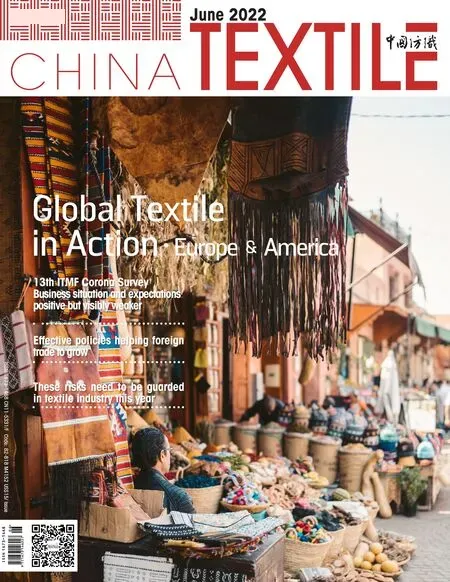European and American brands withdrawn from Russia
By Zhao Xinhua
In Russia, the textile industry is the third largest GDP contributor industry after the food and beverage industry. Compared with garments, the Russian textile industry pro—duces more technical textiles. Russia is an important export market for China's textiles and clothing, and it is also an important region for China's export market diversification and "go global" strategy. Russian semi—finished textile and garment products are mainly imported from Asian countries such as China, India, Turkey, etc.
Ukraine is the fabric distribution center in Central and Eastern Europe, and has the largest physical fabric market in Eastern Europe. These fabrics are mainly from China and Turkey. Ukraine is an old—fashioned garment processing area in the Soviet Union, and there are still a large number of small and medium—sized garment enterprises. Ukrainian women's consumption power is the main factor, and there are many niche designer. Its labor force is relatively cheap, skilled workers are abundant and it is exported to Canada. Russia and the United States have duty—free agreements.
Trade data
In 2019, 2020 and 2021, Russia’s total textile and ap—parel imports from China amounted to 8.84 billion US dollars, 7.65 billion US dollars and 7.26 billion US dollars respectively. In 2021, textile and apparel exports to Russia accounted for 2.2 percent of China’s total textile and apparel exports. By comparing the data of product structure exported from 2017 to 2021, it can be found that China’s exports to Russia are mainly clothing. In 2021, China exported almost twice as much clothing as textiles to Russia.
In 2019, 2020 and 2021, China’s textile and garment exports to Ukraine were 6.8 million US dollars, 660 million US dollars and 760 million US dollars respectively, accounting for about 35—40 percent of Ukraine’s imports. China is Ukraine’s largest source of textile and garment imports, but Ukraine’s share of China’s textile and garment exports is relatively low, accounting for about 0.23 percent in 2021. Uzbekistan’s textile and garment export is about 400 million US dollars in recent years. Germany, Denmark and Italy are the main markets for Uzbekistan’s textile and garment export. In 2021, China’s textile and garment exports to Russia and Ukraine totaled 8.02 billion US dollars, accounting for 2.5 percent of the total textile and garment exports.
The impact of Russia-Ukraine conflict on the international textile market
Russia is one of the largest energy exporters in the world. Rus—sia and Ukraine are both major grain exporters. The Russia—Ukraine conflict has had a significant impact on the bulk oil and food markets in a short time. The price fluctuation of polyester staple fiber caused by petroleum will further affect the price of cotton and viscose, and the instability of raw material market will cause some troubles for cot—ton spinning enterprises in purchasing raw materials. Fluctuation of exchange rate, obstruction of shipping and land are undoubtedly the main constraints faced by foreign trade enterprises.
According to the Ministry of Industry and Information Technology, of more than 130 key basic chemical materials, 32 percent of them are still blank and 52 percent are still de—pendent on imports. Such as high—end electronic chemicals, high—end functional materials, high—end polyolefin, aromatic hydrocarbons, chemical fibers, etc., and the above products and industrial chain subdivided raw materials are mostly basic bulk chemical raw materials. Since the beginning of the year, the price trend of these products gradually skyrocketed, the highest price increased by 8,200 yuan/ton, up nearly 30 percent.
At present, China's textile and garment enterprises need to take certain measures to deal with the risks of foreign trade. Under the situation of stalemate in Russia and Ukraine and fluctuation of raw materials, the operating conditions of domestic textile enterprises are obviously differentiated at present, and some large and medium—sized enterprises have relatively stable orders, keeping a reasonable cotton inventory level; however, since October last year, small busi—nesses have received fewer orders, and the raw materials are basically kept in the state of being bought with use. For the middle and lower reaches of enterprises, the increase of raw material cost, labor cost and other operating costs will con—tinue to squeeze the profits of textile industry.
- China Textile的其它文章
- Dear readers:
- 13th ITMF Corona Survey Business situation and expectations positive but visibly weaker
- CNTAC is strongly opposed to “Uyghur Forced Labor Prevention Act”
- France cooperates with EU institutions to try to get out of trouble
- Cross-industry innovations solve the new problems of German textile industry
- 榮盛集團(tuán)

